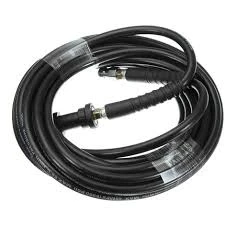pipe coupling
Understanding Pipe Couplings Essential Components in Fluid Transport
Pipe couplings are crucial components in the realm of plumbing, construction, and industrial piping systems. These devices allow two or more pipes to be connected together, ensuring a seamless flow of fluids and preventing leaks. A well-designed pipe coupling not only facilitates easy assembly and disassembly of piping systems but also enhances the overall efficiency and reliability of fluid transport.
Types of Pipe Couplings
There are several types of pipe couplings available, each designed to meet specific needs and applications. The most common types include
1. Rigid Couplings These couplings create a permanent joint between two pipes. They are used in situations where alignment is critical, such as in fixed systems without movement. Welded couplings are a prime example of rigid couplings, providing strong, long-lasting connections.
2. Flexible Couplings Unlike rigid couplings, flexible couplings allow for a certain degree of movement or misalignment between pipes. This flexibility is crucial in applications where thermal expansion, vibration, or ground settlement can cause shifts in pipe position.
3. Expansion Couplings Designed to absorb the expansion and contraction of pipes due to temperature changes, expansion couplings play a vital role in high-temperature applications. They help maintain the integrity of piping systems while preventing damage from thermal stresses.
4. Compression Couplings These are commonly used in repair applications. Compression couplings have a design that allows for quick installation and removal, making them ideal for urgent repairs or modifications to existing systems.
pipe coupling

5. Threaded Couplings Used primarily in smaller piping systems, threaded couplings provide a simple way to connect pipes using threads. They are easy to install and remove, making maintenance and replacement straightforward.
Applications of Pipe Couplings
Pipe couplings are used in a diverse range of industries, including residential plumbing, oil and gas, chemical manufacturing, and water treatment. In residential settings, they connect water supply lines, drain pipes, and HVAC systems. In industrial applications, couplings are vital for creating robust pipelines that transport various fluids, from water to hazardous chemicals, ensuring safety and compliance with regulations.
Importance of Choosing the Right Coupling
Selecting the appropriate type of pipe coupling is essential for the longevity and efficiency of the piping system. Factors to consider include the material of the pipes, the nature of the fluid being transported, pressure ratings, and environmental conditions. Using the wrong type of coupling can lead to leaks, system failures, and costly repairs.
Conclusion
In conclusion, pipe couplings are foundational elements in fluid transport systems. With various types available, they serve numerous applications across different industries. Understanding the specific requirements of a project is essential for selecting the proper coupling, which ultimately contributes to the efficiency and reliability of the entire piping system. Whether in a residential setting or an industrial complex, pipe couplings play an indispensable role in maintaining the flow of fluids, highlighting their importance in everyday life and industrial operations.
-
Ultimate Spiral Protection for Hoses & CablesNewsJun.26,2025
-
The Ultimate Quick-Connect Solutions for Every NeedNewsJun.26,2025
-
SAE J1401 Brake Hose: Reliable Choice for Safe BrakingNewsJun.26,2025
-
Reliable J2064 A/C Hoses for Real-World Cooling NeedsNewsJun.26,2025
-
Heavy-Duty Sewer Jetting Hoses Built to LastNewsJun.26,2025
-
Fix Power Steering Tube Leaks Fast – Durable & Affordable SolutionNewsJun.26,2025

